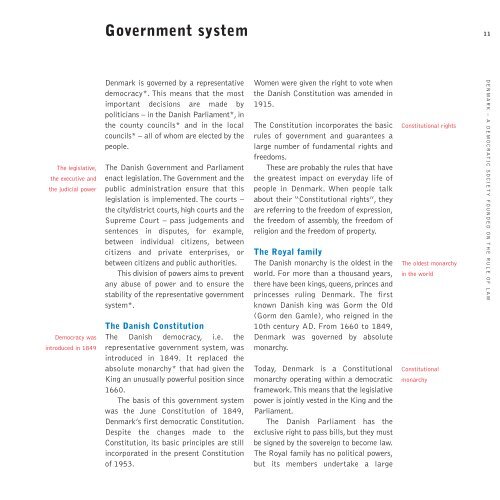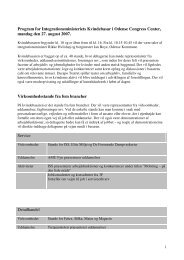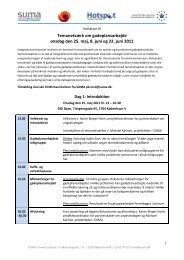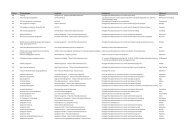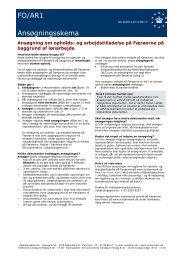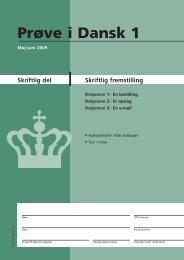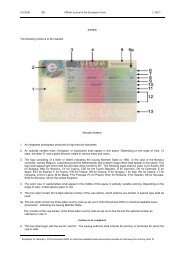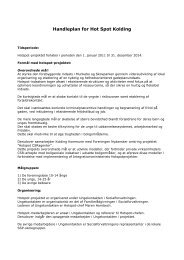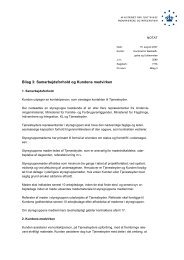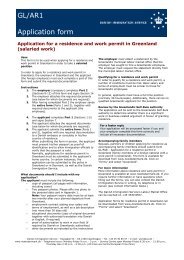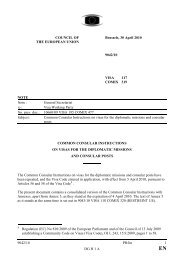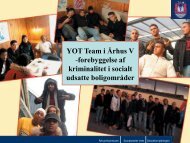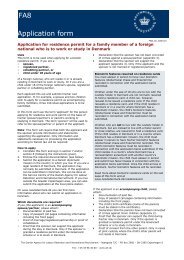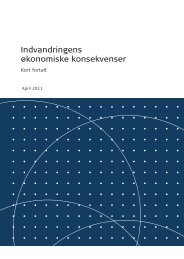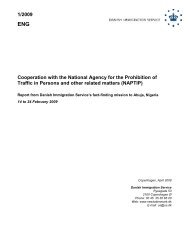medborger_i_danmark_engelsk.pdf - Ny i Danmark
medborger_i_danmark_engelsk.pdf - Ny i Danmark
medborger_i_danmark_engelsk.pdf - Ny i Danmark
- No tags were found...
You also want an ePaper? Increase the reach of your titles
YUMPU automatically turns print PDFs into web optimized ePapers that Google loves.
Government system11The legislative,the executive andthe judicial powerDemocracy wasintroduced in 1849Denmark is governed by a representativedemocracy*. This means that the mostimportant decisions are made bypoliticians – in the Danish Parliament*, inthe county councils* and in the localcouncils* – all of whom are elected by thepeople.The Danish Government and Parliamentenact legislation.The Government and thepublic administration ensure that thislegislation is implemented. The courts –the city/district courts, high courts and theSupreme Court – pass judgements andsentences in disputes, for example,between individual citizens, betweencitizens and private enterprises, orbetween citizens and public authorities.This division of powers aims to preventany abuse of power and to ensure thestability of the representative governmentsystem*.The Danish ConstitutionThe Danish democracy, i.e. therepresentative government system, wasintroduced in 1849. It replaced theabsolute monarchy* that had given theKing an unusually powerful position since1660.The basis of this government systemwas the June Constitution of 1849,Denmark’s first democratic Constitution.Despite the changes made to theConstitution, its basic principles are stillincorporated in the present Constitutionof 1953.Women were given the right to vote whenthe Danish Constitution was amended in1915.The Constitution incorporates the basicrules of government and guarantees alarge number of fundamental rights andfreedoms.These are probably the rules that havethe greatest impact on everyday life ofpeople in Denmark. When people talkabout their “Constitutional rights”, theyare referring to the freedom of expression,the freedom of assembly, the freedom ofreligion and the freedom of property.The Royal familyThe Danish monarchy is the oldest in theworld. For more than a thousand years,there have been kings, queens, princes andprincesses ruling Denmark. The firstknown Danish king was Gorm the Old(Gorm den Gamle), who reigned in the10th century AD. From 1660 to 1849,Denmark was governed by absolutemonarchy.Today, Denmark is a Constitutionalmonarchy operating within a democraticframework.This means that the legislativepower is jointly vested in the King and theParliament.The Danish Parliament has theexclusive right to pass bills, but they mustbe signed by the sovereign to become law.The Royal family has no political powers,but its members undertake a largeConstitutional rightsThe oldest monarchyin the worldConstitutionalmonarchyDENMARK – A DEMOCRATIC SOCIETY FOUNDED ON THE RULE OF LAW


